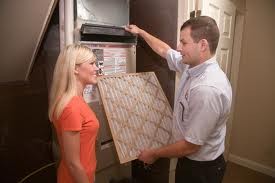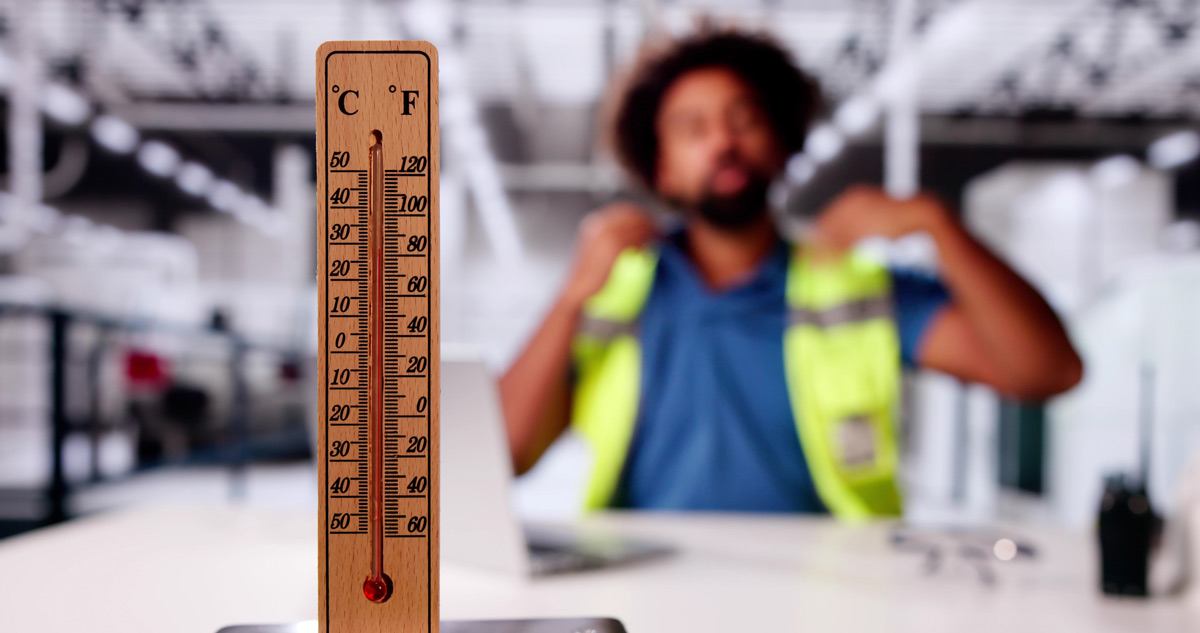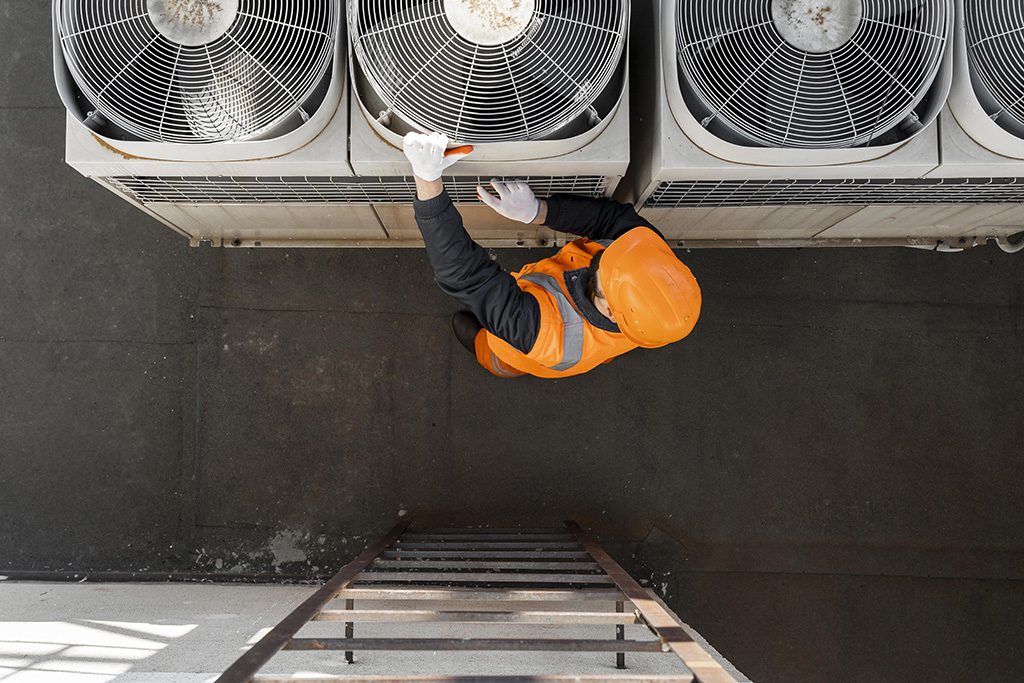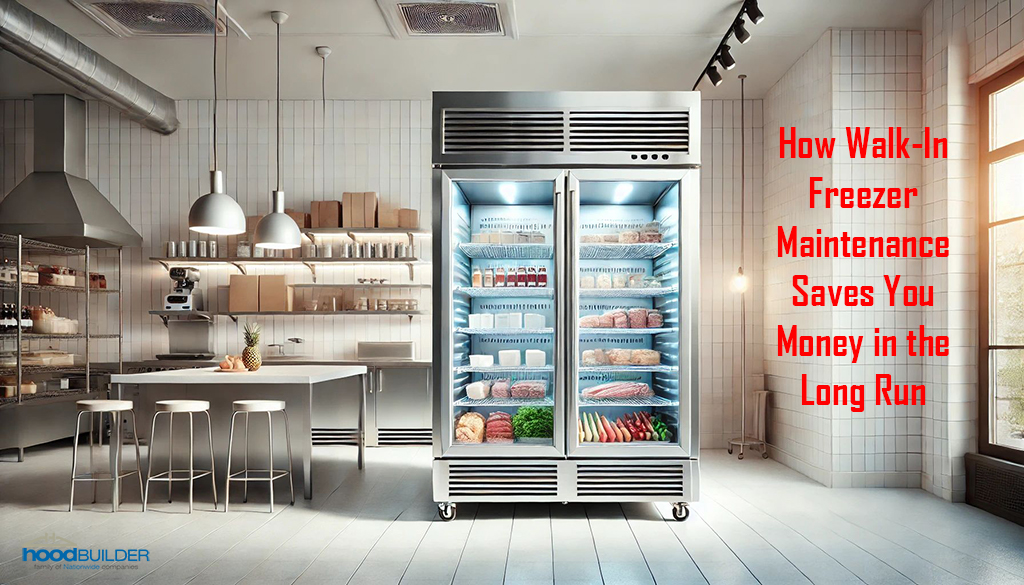What is Air Balancing?
The air in every building, whether it’s a large commercial facility, hospital, or private family home, has a positive or negative air pressure. Because of various factors, including infrastructural issues within the HVAC system, the presence of too many electric and electronic devices (stoves/TVs/computer monitors) or even the furniture placement in the room, airflow can become unbalanced. Air balancing is a service that seeks to correct this problem, making the HVAC (Heating, Ventilation and Air Conditioning systems) in the building or home more efficient and the room climate more comfortable.
Air Balancing (Defined)
HVAC air balancing optimizes the HVAC system to best ensure that air becomes evenly distributed throughout a building. This involves inspecting all elements of the system, cleaning ducts, replacing or refitting ducts and dampers. Beyond visual inspection of these elements, air balancing also involves testing, adjusting, and balancing services. A series of tests is performed that determines the problem areas in each home/building. This allows Certified Air Balance technicians to fix/modify the elements of HVAC that are causing the issue, thus balancing airflow. The result is a building with improved, cleaner air quality, less temperature dips and highs, no hot/cold spots, and doors that are neither too hard to open (negative air) or drafty and open (excess positive air).
Why Air Balancing?
Oftentimes, unbalanced airflow is a silent problem that the owners of the home or business are not aware of, except for rising AC and heating bills. When left unattended, this can cost thousands of dollars per year. If there is too much positive air in a room, it will pull outside air in, which can cause the building to become too hot or too cold, depending on the weather. The people inside adjust the thermostat to compensate for the inconsistent temperature, producing a very costly energy inefficiency that is so easily preventable with the help of Certified Air Balancing.
On the other hand, when there is too much negative air, the room will suck air from window and door cracks, trash bins, etc. creating an unpleasant air quality inside the building. This taxes the HVAC system as it struggles to filter the air. Eventually, the excessive harmful particles sucked up in a negative building will overwhelm the system, allowing unfiltered air to circulate, jeopardizing the health of its occupants.
When an unbalanced airflow in a building becomes apparent, it can cause great discomfort and annoyance to the people within. In a home, this means an unwelcoming atmosphere for its occupants, and for a business, this can precipitate falling employee morale and productivity.
HVAC System Performance and Air Balancing
Every building is equipped with a Heating, Ventilation and Air Conditioning system, and that system needs to be tested for proper and optimal performance prior to use and throughout its lifespan. An extensive battery of tests examining various aspects of a building’s HVAC system is necessary to understanding your HVAC system performance thoroughly.
HVAC Air Balancing & Testing.
Tests done by certified air balancing professionals determine HVAC system performance by looking individually at: energy use and its efficiency, air purification testing (examines indoor air quality) and airflow testing. An unbalanced pressure buildup in a building will negatively affect the performance of all HVAC system functions and vice versa. A deficiency in the infrastructure of the HVAC system will contribute to uneven distribution of air throughout the home or business building. This is why it’s important to perform air balance adjustments with a trusted company.
Common Causes of Airflow Problems Fixed by Air Balance Adjustments
-
Missing dampers:
Dampers are plates that open and close to direct air towards or away from specified sections of the building to accommodate the needs of different zones (rooms/levels). When they are missing, air is distributed incorrectly, causing temperature inconsistencies.
-
Restrictive ducts:
Air ducts made with the wrong material create air friction and turbulence. Fittings of a tight elbow shape make airflow harder, forcing the HVAC system to work overtime to push air through.
-
Duct leakage:
The integrity of the material of the ducts and the connective fittings can greatly affect airflow. Brittle materials with no flex allow breaks to happen; rodents can chew through ducts, creating holes. Huge amounts of conditioned air can be lost through leaking ducts, causing energy inefficiency.
-
Blower problems:
When the blower fan is damaged, there is no steady pushing of air to be cooled or heated. Slow airflow through the ducts taxes the HVAC system.
-
Restrictive coils and filters:
Dust, grease, dirt and other contaminants can clog up the condenser coil of the cooling system, causing decreased airflow. Dirty filters can also cause air friction, contributing to turbulence within the ducts and making airflow much slower.
For a full and fast price quote, contact Hood Builder today.
Certified Air Balancing
Certified Air Balancing is Air Balancing performed by trained, accredited and certified air balancing professionals. Air balancing can be attempted by general handymen but is an art form best left to certified air balancing technicians that have completed the Testing, Adjusting and Balancing Certification Program. Certified Air Balancing is done by technicians that have been approved by NEBB or similar accrediting body, passing examinations issued by their accrediting institution as well as having completed a certain amount of working/supervising hours. HVAC firms applying for certified status must have a senior technician on staff who checks, approves, and signs off on all air balancing jobs. This individual must pass a certified professional written exam as well as a report review exam. The certified testing engineers must have 8 years of air balancing experience or an engineering degree with 4 years of on the job experience. They have to oversee various aspects within their company–instrument calibration, technician training, and safety. They also must also submit their company’s standard operating procedures to NEBB to incur certification for their company.
Individual contractors seeking certification must pass rigorous testing and complete two years of hands-on training to achieve certification.
WHY CHOOSE A CERTIFIED AIR BALANCING CONTRACTOR
While air balancing prior to the opening of a new building at the end of construction is somewhat simpler, service calls to homes and older buildings with deteriorating infrastructure require something more. Education, intuition, and experience are necessary for this more complicated kind of job. This is why choosing a professional certified in air balancing, testing, and reporting is so important. Certified Air Balancing technicians are experts at troubleshooting irregular ductwork problems as well as cleaning and repairing aging HVAC elements. They also usually have the full range of tools necessary to test and adjust even the most challenging airflow problem, as opposed to HVAC generalists.
Commercial Air Balancing Certification Program
Individual contractors can seek air balance certification through several available courses. The International Training Institute (ITI) of Sheet Metal and Air Conditioning Industry offers various training options over the course of either one or two years. The Testing, Adjusting and Balancing Bureau initiated the TABB certification, which sets a standard for HVAC companies and individual contractors seeking to specialize in air balancing. All companies vying for TABB certified status must have at least one person on staff who has passed all written tests and is in good standing with NEBB. Individuals with TABB certification must have at least several years of experience performing and supervising air balancing services as well as having passed the examinations. The central bodies offering certification in air balancing to HVAC/ air balancing companies are the National Environmental Balancing Bureau (NEBB), the National Comfort Institute, The Associated Air Balancing Council, and the National Balancing Council.
Commercial Air Balancing Certification prepares technicians for inspecting commercial buildings and testing the performance of the HVAC systems therein. This involves sealing off the building, closing dampers at each opening, adjusting them, and measuring airflow. When balanced airflow is achieved, the settings are locked in for optimal function. Certified technicians can do the initial adjustments as well as skillfully service older systems that need to have their ducts, coils and other elements inspected/repaired. Because they are knowledgeable about the hows and the whys of various HVAC system problems, they are able to efficiently troubleshoot to find the root problems instead of providing band aid solutions that eventually wear down the system. Hiring a professional for the job will save the customer money and prolong the life of their heating, ventilation and conditioning system.

We’ve got you covered. Hood Builder is a leading distribution, fabrication, and installation company for food facilities of any size. We have offices and plants across the United States that are ready to tend to your needs.
If you intend on receiving quotes from other installers in the industry, please be sure to compare the items included in the package in addition to price and reputation. Our objective is to always be your obvious choice. Please fill out the form below and and we will prepare a quote.
For a Full and Fast price Quote, Contact Hood Builder today at 303-777-7720.




